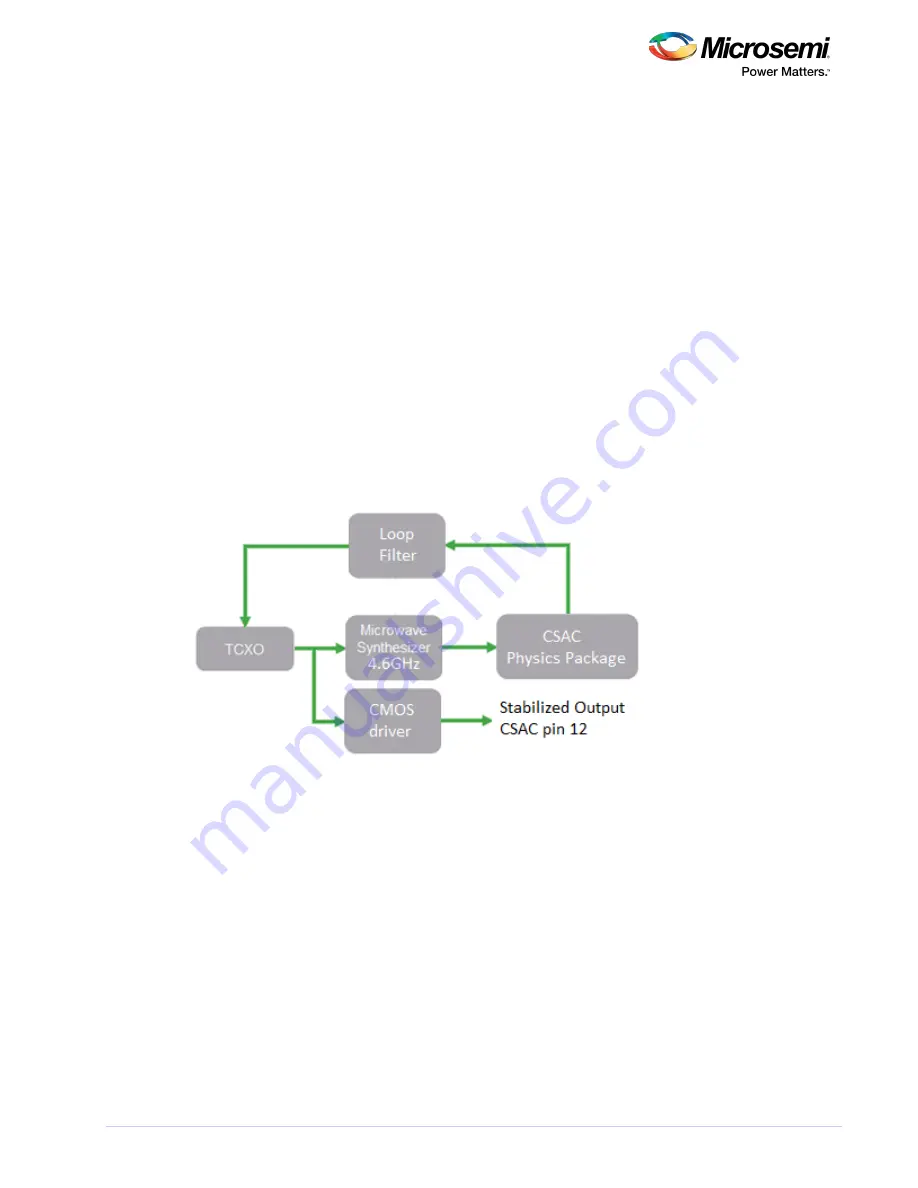
SA.45s Chip-Scale Atomic Clock
SA.45s CSAC User Guide Revision D
6
1.
2.
3.
4.
5.
6.
1.
Notes:
Analog Tuning Sensitivity is Δf/f = (V
– 1250 mV) × 1.77 × 10 /mV
tune
–11
Built-in Test Equipment:
0 = Normal Operation
1 = Unlock Condition
Timing reference is rising edge of input pulse on pin 9.
Output 1PPS is 100 µs in duration for option 001. Refer to the datasheet for other options. (400 µs
for firmware versions 1.06 and earlier).
Timing reference is the rising edge of pin 10. Rise time <10 ns at a load capacitance of 10 pF.
See the
for updated parameters.
3.3
Functional Description
The following is a functional description of the CSAC.
3.3.1
Principle of Operation
The CSAC is a passive atomic clock, incorporating the interrogation technique of coherent population
trapping (CPT) and operating on the D1 optical resonance of atomic cesium. A complete description of
passive atomic clocks, CPT, and the CSAC architecture is beyond the scope of this user guide. The
following illustration shows a simplified block diagram of the CSAC.
Figure 3 • Simplified CSAC Block Diagram
The principal RF output from the CSAC is provided by a temperature-compensated crystal oscillator
(TCXO), which is buffered by a CMOS logic gate and provided on the CSAC output pin 12. In normal
operation, the frequency of the TCXO is continuously compared and corrected to ground state hyperfine
frequency of the cesium atoms, contained in the physics package, which thereby improves the stability
and environmental sensitivity of the TCXO by 4–5 orders of magnitude. In addition to the TCXO and the
physics package , the essential components of the CSAC are the microwave synthesizer and the
1
microprocessor . The microwave synthesizer generates 4596.3x MHz with microprocessor-controlled
2
tuning resolution of approximately 1 × 10 . The microprocessor serves multiple functions, including
–12
implementation of the frequency-lock loop filter for the TCXO, optimization of physics package
operation, state-of-health monitoring, and command and control through RS232.
When the CSAC is initially powered on, it performs an acquisition sequence, which includes stabilizing
the temperature of the physics package, optimizing physics package operating parameters, and
acquiring frequency lock to the atomic resonance. The acquisition process may be monitored through
the
field of the telemetry (see
). On power-up, the status
status
"Telemetry (6 and ^)" (see page 20)
begins at 8 (oven warm-up). The status value decrements numerically through the acquisition until
normal operation (status = 0) is achieved.
R. Lutwak, et. al., The Chip-Scale Atomic Clock - Low-Power Physics Package, Proceedings of the 36th
Содержание SA.45s
Страница 1: ...User Guide SA 45s Chip Scale Atomic Clock...










































